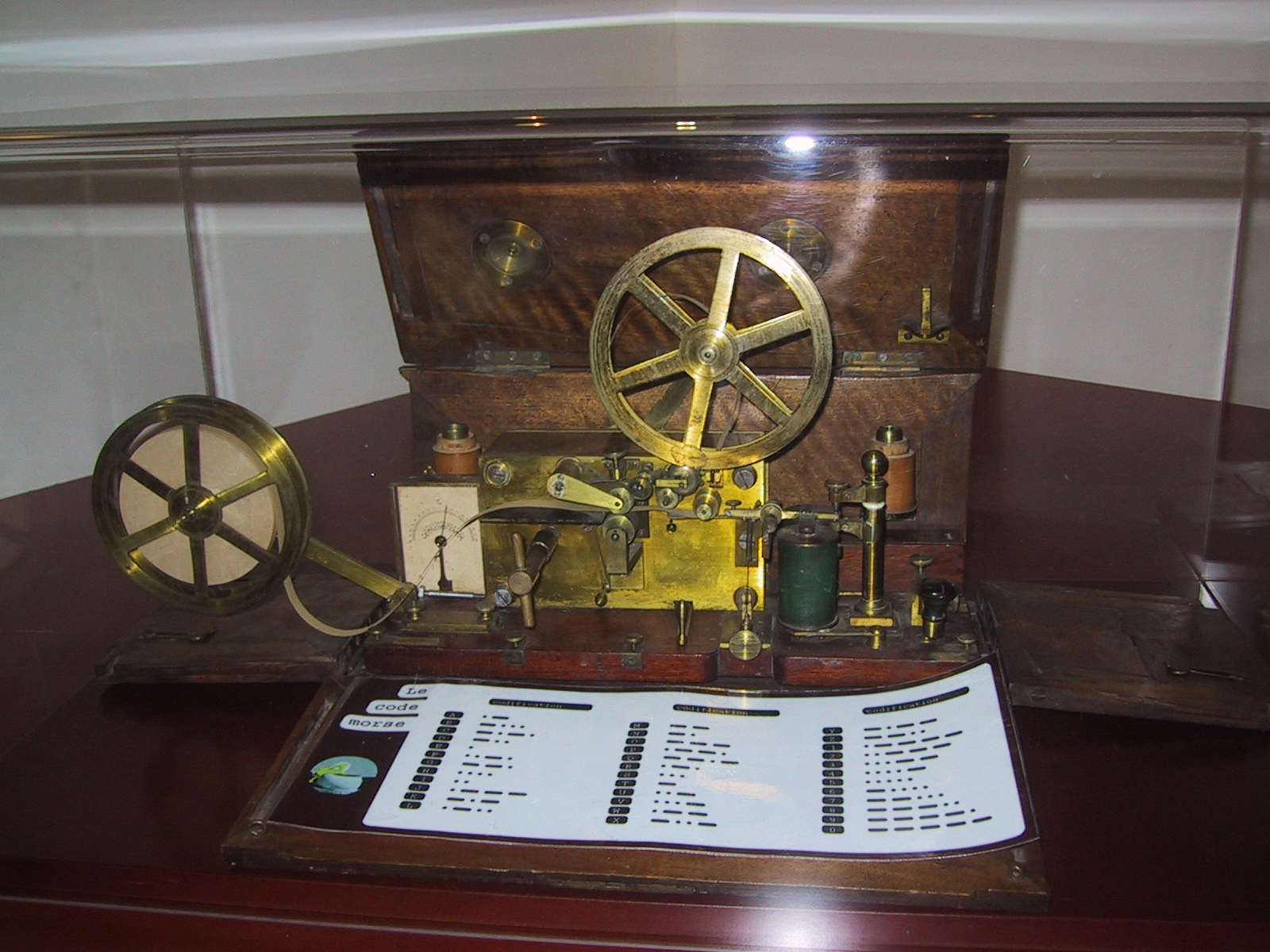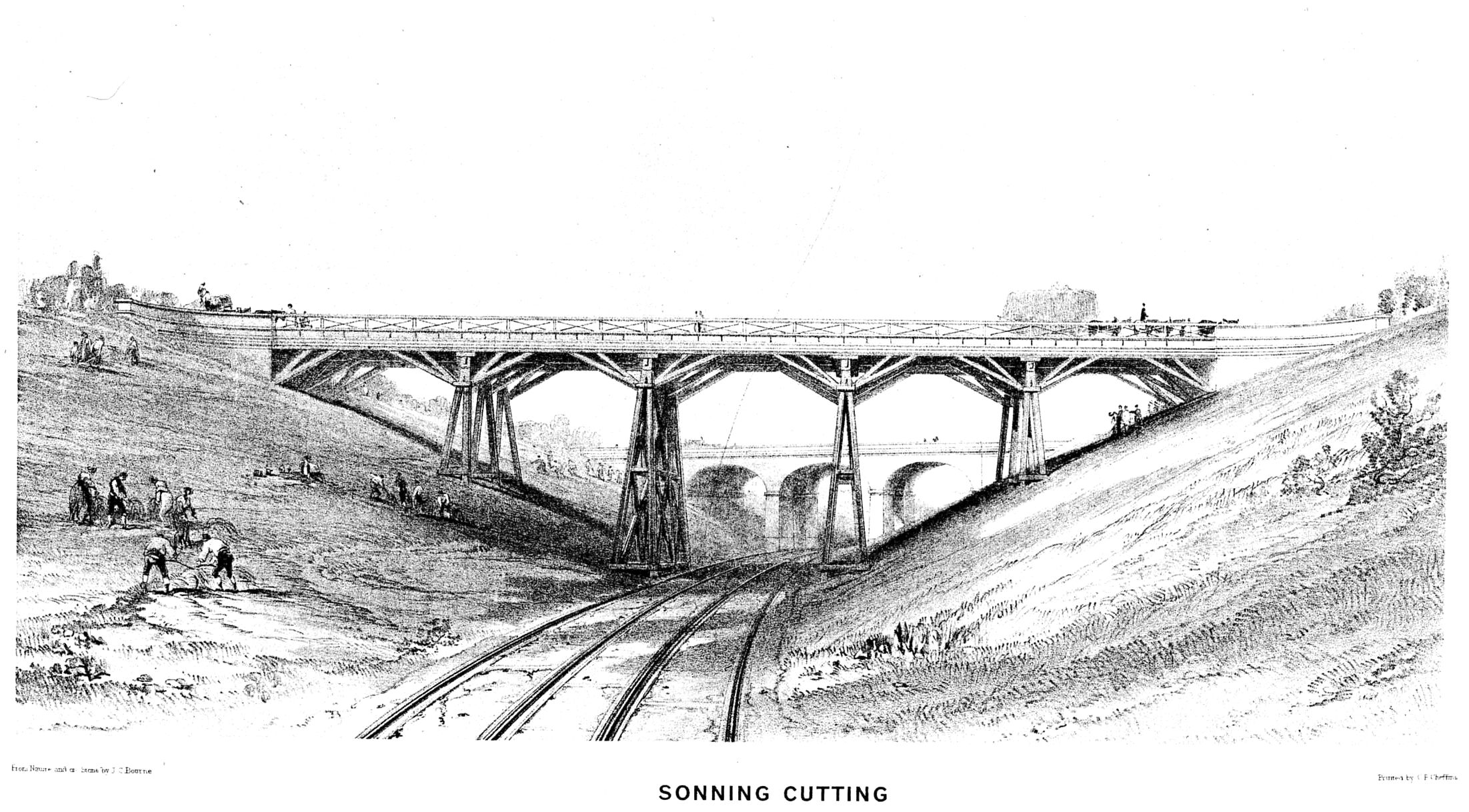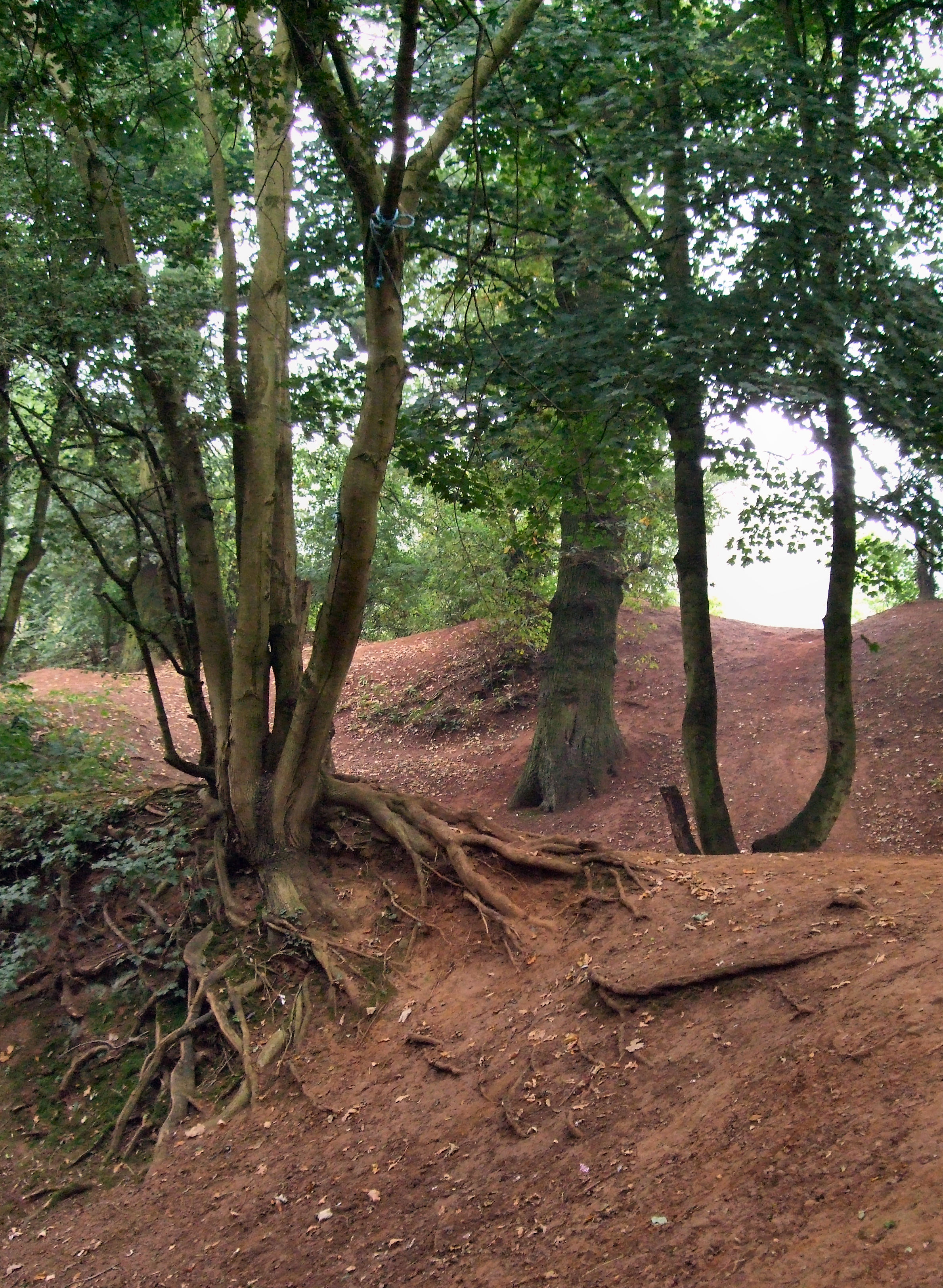|
Weedon Viaduct
Weedon Viaduct is a railway bridge carrying the West Coast Main Line through Weedon Bec in Northamptonshire, England. It was designed by Robert Stephenson for the London and Birmingham Railway and opened in 1838. It is a Grade II listed building. Description The viaduct crosses Church Street and the young River Nene in Weedon Bec, on the outskirts of the village. It was built in stock brick but has been extensively patched with blue brick and dressed with stone. It has five low semi-circular arches with stone springers (the lowest block in the arches). The arches have a span, giving a total length of . It has a roll-moulded stone string course running the length of the bridge above the arches and a brick parapet with stone copings. It terminates in splayed abutments. The viaduct is almost immediately north of Stowe Hill Tunnel near the Watford Gap, where the railway, canal, and ancient and modern roads all take a similar path. Shortly beyond the viaduct, Church Road passes thro ... [...More Info...] [...Related Items...] OR: [Wikipedia] [Google] [Baidu] |
West Coast Main Line
The West Coast Main Line (WCML) is one of the most important railway corridors in the United Kingdom, connecting the major cities of London and Glasgow with branches to Birmingham, Manchester, Liverpool and Edinburgh. It is one of the busiest mixed-traffic railway routes in Europe, carrying a mixture of intercity rail, regional rail, commuter rail and rail freight traffic. The core route of the WCML runs from London to Glasgow for approx. and was opened from 1837 to 1881. With additional lines deviating to Northampton, Birmingham, Manchester, Liverpool and Edinburgh, this totals a route mileage of . The Glasgow–Edinburgh via Carstairs line connects the WCML to Edinburgh. However, the main London–Edinburgh route is the East Coast Main Line. Several sections of the WCML form part of the Urban rail in the United Kingdom, suburban railway systems in London, Coventry, Birmingham, Manchester, Liverpool and Glasgow, with many more smaller commuter stations, as well as providing li ... [...More Info...] [...Related Items...] OR: [Wikipedia] [Google] [Baidu] |
Watford Gap
Watford Gap is a low-lying area between two hills in the English Midlands, near Daventry and the village of Watford in Northamptonshire. Engineers from Roman times onwards have found it to be the most practical route for connecting the Midlands with South East England. The A5 road, the West Coast Main Line railway, the M1 motorway and a branch of the Grand Union Canal traverse in parallel a space about wide. It has been written and spoken of as marking the divide between Northern England and Southern England. Focal point Watford Gap is a low point through a range of hills providing an easy route between the South Eastern and Midland areas of England. It is near the small village of Watford, Northamptonshire. The gap is north-east of Daventry and west of Long Buckby. In the era of Roman Britain, the Watling Street Roman road used the gap. The road here forms the A5, which for national journeys has generally been superseded by the M1 motorway which also passes through this ga ... [...More Info...] [...Related Items...] OR: [Wikipedia] [Google] [Baidu] |
Grade II Listed Bridges
Grade most commonly refers to: * Grading in education, a measurement of a student's performance by educational assessment (e.g. A, pass, etc.) * A designation for students, classes and curricula indicating the number of the year a student has reached in a given educational stage (e.g. first grade, second grade, K–12, etc.) * Grade (slope), the steepness of a slope * Graded voting Grade or grading may also refer to: Music * Grade (music), a formally assessed level of profiency in a musical instrument * Grade (band), punk rock band * Grades (producer), British electronic dance music producer and DJ Science and technology Biology and medicine * Grading (tumors), a measure of the aggressiveness of a tumor in medicine * The Grading of Recommendations Assessment, Development and Evaluation (GRADE) approach * Evolutionary grade, a paraphyletic group of organisms Geology * Graded bedding, a description of the variation in grain size through a bed in a sedimentary rock * Meta ... [...More Info...] [...Related Items...] OR: [Wikipedia] [Google] [Baidu] |
Bridges In Northamptonshire
A bridge is a structure built to Span (engineering), span a physical obstacle (such as a body of water, valley, road, or railway) without blocking the path underneath. It is constructed for the purpose of providing passage over the obstacle, which is usually something that is otherwise difficult or impossible to cross. There are many different designs of bridges, each serving a particular purpose and applicable to different situations. Designs of bridges vary depending on factors such as the function of the bridge, the nature of the terrain where the bridge is constructed and anchored, the material used to make it, and the funds available to build it. The earliest bridges were likely made with fallen trees and stepping stones. The Neolithic people built boardwalk bridges across marshland. The Arkadiko Bridge, dating from the 13th century BC, in the Peloponnese is one of the oldest arch bridges in existence and use. Etymology The ''Oxford English Dictionary'' traces the origin of ... [...More Info...] [...Related Items...] OR: [Wikipedia] [Google] [Baidu] |
Bridges Completed In 1838
A bridge is a structure built to span a physical obstacle (such as a body of water, valley, road, or railway) without blocking the path underneath. It is constructed for the purpose of providing passage over the obstacle, which is usually something that is otherwise difficult or impossible to cross. There are many different designs of bridges, each serving a particular purpose and applicable to different situations. Designs of bridges vary depending on factors such as the function of the bridge, the nature of the terrain where the bridge is constructed and anchored, the material used to make it, and the funds available to build it. The earliest bridges were likely made with fallen trees and stepping stones. The Neolithic people built boardwalk bridges across marshland. The Arkadiko Bridge, dating from the 13th century BC, in the Peloponnese is one of the oldest arch bridges in existence and use. Etymology The ''Oxford English Dictionary'' traces the origin of the word ''bridge' ... [...More Info...] [...Related Items...] OR: [Wikipedia] [Google] [Baidu] |
1838 Establishments In England
Events January–March * January 10 – A fire destroys Lloyd's Coffee House and the Royal Exchange, London, Royal Exchange in London. * January 11 – At Morristown, New Jersey, Samuel Morse, Alfred Vail and Leonard Gale give the first public demonstration of Morse's new invention, the telegraph. * January 21 – The first known report about the Lowest temperature recorded on Earth, lowest temperature on Earth is made, indicating in Yakutsk. * January 23 – A 1838 Vrancea earthquake, 7.5 earthquake strikes the Romanian district of Vrancea County, Vrancea causing damage in Moldavia and Wallachia, killing 73 people. * February 6 – Boer explorer Piet Retief and 60 of his men are massacred by King Dingane kaSenzangakhona of the Zulu people, after Retief accepts an invitation to celebrate the signing of a treaty, and his men willingly disarm as a show of good faith. * February 17 – Weenen massacre: Zulu impis massacre about 532 Voortrekkers, Khoikhoi and Sotho people, ... [...More Info...] [...Related Items...] OR: [Wikipedia] [Google] [Baidu] |
John Cooke Bourne
John Cooke Bourne (1 September 1814 – February 1896) was a British artist, engraver and photographer,John Hannavy (2013) ''Encyclopedia of Nineteenth-Century Photography.''. p. 196. best known for his lithographs showing the construction of the London and Birmingham Railway and the Great Western Railway. His set of prints were each published as separate book, and became classic representations of the construction of the early railways. Prints were often hand coloured for a vivid picture of events. Biography John Cooke Bourne was born in London, where his father worked as hat-maker in Covent Garden. He was related to the engraver George Cooke (engraver), George Cooke, who was his Godparent, godfather, and became befriended with his son Edward William Cooke, whose uncle, William Bernard Cooke (1778–1855), was also a line engraver of note. After general education, Bourne became a pupil of the landscape engraver John Pye, who had specialised in illustrations for popular annual ... [...More Info...] [...Related Items...] OR: [Wikipedia] [Google] [Baidu] |
Northampton Loop
The Northampton loop is a railway line serving the town of Northampton. It is a branch of the West Coast Main Line, deviating from the faster direct main line which runs to the west. The WCML is a four track line up to either end of the Loop: the 'up' and 'down' fast tracks take the direct route while the 'up' and 'down' slow tracks are diverted via Northampton railway station. Generally, fast express trains run via the direct line, while freight and slower passenger services run via the loop line. The southern interconnect between the Northampton loop and the direct London–Birmingham main line is at Hanslope Junction, just north of Milton Keynes. The lines continue to run alongside until the two routes diverge north of Roade at the northern end of Roade Cutting. The loop line then runs north east for several miles until it reaches Northampton station. After Northampton, the line heads to the north-west for around twenty miles, until it re-joins the main line at Hillmorto ... [...More Info...] [...Related Items...] OR: [Wikipedia] [Google] [Baidu] |
Northampton
Northampton ( ) is a town and civil parish in Northamptonshire, England. It is the county town of Northamptonshire and the administrative centre of the Unitary authorities of England, unitary authority of West Northamptonshire. The town is situated on the River Nene, north-west of London and south-east of Birmingham. Northampton is one of the largest towns in England; the population of its overall urban area was recorded as 249,093 in the 2021 United Kingdom census, 2021 census. The parish of Northampton alone had 137,387. Archaeological evidence of settlement in the area dates to the Bronze Age Britain, Bronze Age, Roman conquest of Britain, Romans and Anglo-Saxons, Anglo-Saxons. In the Middle Ages, the town rose to national significance with the establishment of Northampton Castle, an occasional royal residence which regularly hosted the Parliament of England. Medieval Northampton had many churches, monasteries and the University of Northampton (thirteenth century), Univers ... [...More Info...] [...Related Items...] OR: [Wikipedia] [Google] [Baidu] |
Roade Cutting
Roade Cutting, also known as Blisworth Cutting, is a railway earthwork and geological Site of Special Scientific Interest along the West Coast Main Line north from Roade in Northamptonshire, England. It is a Geological Conservation Review site. Geology The cutting exposes rocks dating to the Middle Jurassic Bathonian stage, between 168.3 and 167.1 million years ago. It is described by Natural England as important for reconstructing the environment of deposition during the period, and correlating the White Limestone Formation in Oxfordshire and the East Midlands. Engineering The cutting is long and a maximum deep. The ground proved to be an unstable combination of limestone, clay, and shale and the construction work suffered problems with water ingress. Large brick retaining walls were required to stabilise the cutting sides. The cutting is crossed by four tall brick bridges and an aqueduct, which was built to carry a small stream.Biddle, p. 318. The overbridges have all been r ... [...More Info...] [...Related Items...] OR: [Wikipedia] [Google] [Baidu] |
Grand Union Canal
The Grand Union Canal in England is part of the Canals of the United Kingdom, British canal system. It is the principal navigable waterway between London and the Midlands. Starting in London, one arm runs to Leicester and another to Birmingham. The Birmingham canal is with 166 Canal lock, locks. The Birmingham line has a number of short branches to places including Slough, Aylesbury, Wendover, and Northampton. The Leicester line has two short arms of its own, to Market Harborough and Welford, Northamptonshire, Welford. It has links with other canals and navigable waterways, including the River Thames, the Regent's Canal, the River Nene and River Soar, the Oxford Canal, the Stratford-upon-Avon Canal, the Digbeth Branch Canal and the Birmingham and Fazeley Canal. The canal south of Braunston to the River Thames at Brentford in London is the original Grand Junction Canal. At Braunston the latter met the Oxford Canal linking back to the Thames to the south and to Coventry to ... [...More Info...] [...Related Items...] OR: [Wikipedia] [Google] [Baidu] |
Stowe Hill Tunnel
Stowe Hill Tunnel is a railway tunnel on the West Coast Main Line just south of the village of Weedon, Northamptonshire, England. Background The tunnel was built as part of the London and Birmingham Railway and designed by its chief engineer, Robert Stephenson. Stephenson also surveyed the route. He took the line north-west from Roade Cutting, bypassing Northampton, partly because reaching it would require a gradient greater than the ruling 1:330 that Stephenson was determined to preserve. From Blisworth, at the north end of the cutting, the railway crosses the Blisworth Arch then follows much the same route as the Grand Union Canal, built a generation earlier. Stowe Hill is the sixth tunnel from London in the northbound direction. Description The tunnel runs in a straight line underneath the A5 main road between Weedon and Towcester from about northwest to southeast. The tunnel has a single bore with twin tracks and is long. The next station southbound is Wolverton and nort ... [...More Info...] [...Related Items...] OR: [Wikipedia] [Google] [Baidu] |








